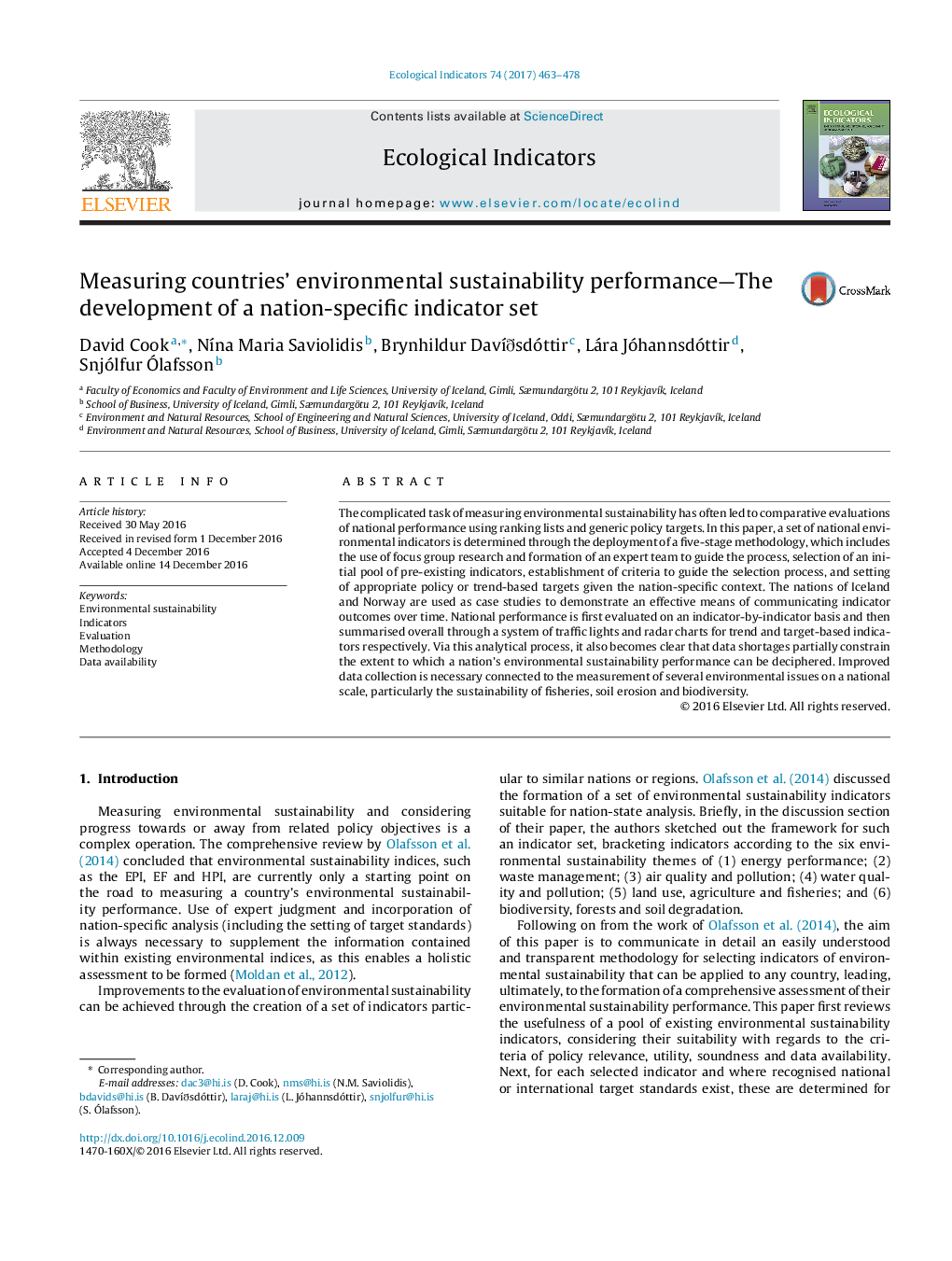| Article ID | Journal | Published Year | Pages | File Type |
|---|---|---|---|---|
| 5741872 | Ecological Indicators | 2017 | 16 Pages |
â¢New methodology for measuring environmental sustainability at the national scale.â¢Case studies of Iceland and Norway illustrate practical application of the approach.â¢Radar charts and system of traffic lights evaluate national performance.â¢Improved data collection required to fully evaluate environmental sustainability.
The complicated task of measuring environmental sustainability has often led to comparative evaluations of national performance using ranking lists and generic policy targets. In this paper, a set of national environmental indicators is determined through the deployment of a five-stage methodology, which includes the use of focus group research and formation of an expert team to guide the process, selection of an initial pool of pre-existing indicators, establishment of criteria to guide the selection process, and setting of appropriate policy or trend-based targets given the nation-specific context. The nations of Iceland and Norway are used as case studies to demonstrate an effective means of communicating indicator outcomes over time. National performance is first evaluated on an indicator-by-indicator basis and then summarised overall through a system of traffic lights and radar charts for trend and target-based indicators respectively. Via this analytical process, it also becomes clear that data shortages partially constrain the extent to which a nation's environmental sustainability performance can be deciphered. Improved data collection is necessary connected to the measurement of several environmental issues on a national scale, particularly the sustainability of fisheries, soil erosion and biodiversity.
